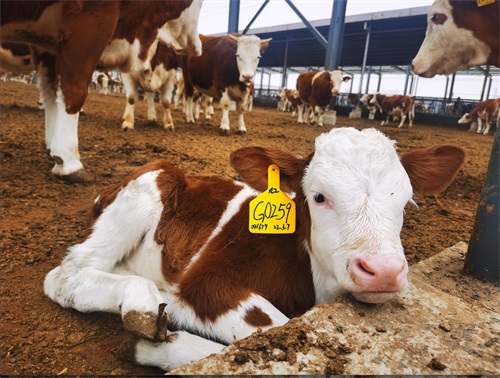Applications of Bovine Ultrasound in Dairy Cow Reproductive Management
The advent of bovine ultrasound machines helps farmers understand several reproductive events relevant to cows, such as follicle and corpus luteum development, ovulation, pregnancy diagnosis, uterine infection, and embryonic and fetal growth. As the economic profits of dairy farms increase with improved reproductive efficiency, ultrasound is a tool that helps improve reproductive management decisions for dairy and beef cattle herds. Ultrasound images can provide information on the physiological stages of the main components of the reproductive tract (ovary, follicle, corpus luteum (CL), and uterus), which is of great value for accurate working decisions by animal reproductive practitioners and researchers. Furthermore, ultrasound allows for the real-time diagnosis of reproductive tract pathologies under field conditions with high reliability.

High-Definition Bovine Ultrasound Pregnancy Detector
Follicles grow in a periodic and organized manner known as follicular waves. Follicular waves consist of three fixed (recruitment, selection, and dominance) phases and two conditional (atresia or ovulation) phases. In the fixed phase, a dominant follicle is selected from a group of growing follicles, while unselected (subordinate) follicles undergo atresia. Growing follicles must acquire IGF-I, express LH receptors, and synthesize estradiol under low FSH concentrations to reach the dominant phase. After dominance, the selected follicle will undergo atresia or ovulation depending on the hormonal environment. Ovulation occurs if the follicle reaches the dominant phase when blood progesterone levels decrease; otherwise, atresia occurs and a new wave appears. Follicular waves are characterized by the presence of several follicles between 3 and 4 mm in size. Two or three waves are typically observed in a bovine estrous cycle.
Bovine ultrasound can visualize the selection and dominant phase of follicular waves, rather than the recruitment phase, as it occurs very early in follicular development. The pre-ovulatory follicle on day 0 and the subsequent corpus luteum are located in the left ovary, but only the right ovary is shown in the image because this is where the follicular wave appears. a) A small antral follicle on day 0 is surrounded by a dashed line (the anechoic nature of the follicular fluid makes the follicle appear as a dark circle), and gray arrows indicate the presence of two other antral follicles. b) Follicular wave has appeared, with four follicles surrounded by dashed lines on day 1, three of which were previously observed on day 0 (gray arrows). c) Gray arrows point to the three follicles observed from day 1, whose size increase is easily observed on day 2. The growth of the three follicles observed from day 0 (dashed lines) is shown in Figures c) and d) (days 3 and 4). e) The dominant follicle of the follicular wave is selected (selection of the dominant follicle occurs when the largest follicle diameter reaches approximately 8.5 mm (11)), marking the end of selection and the beginning of the dominant phase. The growth of the dominant follicle (dashed arrows) and the atresia of subordinate follicles (white lines) are shown in Figures g) to i). OS: Ovarian stroma. White arrows: Day 1 of the estrous cycle. The images were taken using a 7.5 MHz probe.
tags: Bovine Ultrasound


